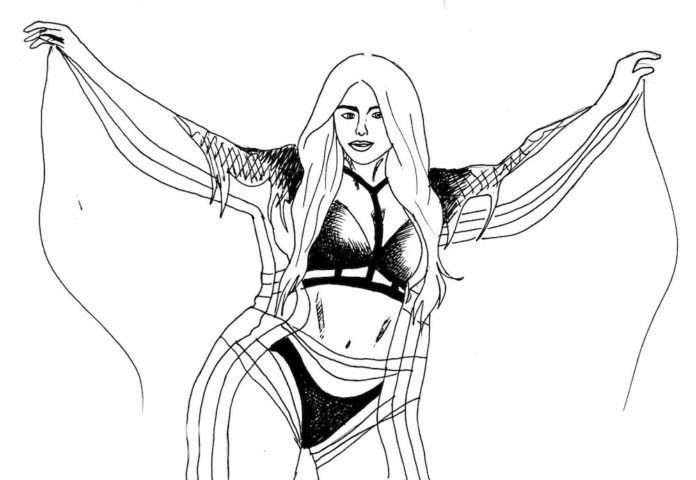Over the last two decades, the Victoria’s Secret (VS) Fashion show has become an iconic event. Each year since middle school, one of my friends would host a viewing party, sending out invitations weeks in advance for the overly-hyped fashion show. The viewing parties had pink-frosted cupcakes, pink satin robes and champagne glasses filled with sparkling apple juice. We would flock around the TV, gawking over the skinny, white models, as our self-esteem withered away. Looking back on it, it’s absurd how big of a role the fashion show had in shaping our views on both beauty and femininity. Although the show was canceled this year, it doesn’t make up for the years of damage it’s done to young girls everywhere.
Despite its cancellation, VS is still the epitome of lingerie fashion shows. In 2016, the show brought in 6.7 million views while airing on CBS, and 61 percent of the viewers were female. VS makes their shows alluring to straight men with excessive sexualization of the models’ bodies, while young girls are fascinated by the femininity of the show. However, the destruction caused by the VS fashion shows is irreversible.
With 77 percent of girls showing dissatisfaction with their bodies, parading unnaturally skinny women around and showering them with praise is detrimental to this already vulnerable population. The way these models look isn’t natural or attainable by most women. It gives the viewers unrealistic expectations about how female bodies should look.
Fashion shows, or “fashion parades,” began in the 1860s. During a time where advertisements didn’t revolve around social media, the purpose of these shows was to showcase new fashion collections. Fashion shows today have changed from a form of advertisement to entertainment. Producers invest millions of dollars in the production of these shows, from the flashy set design to booking high-profile artists to perform. The 2016 show in Paris cost $20 million to produce. They’re no longer just watched by those in the fashion world, but by women everywhere.
As a 16-year-old, I fixated on the models’ bodies during the 2015 Victoria’s Secret Fashion Show. They were tall with long blonde hair; toned, skinny legs that shimmered; slim arms that glowed; and flat stomachs. Although this was a fashion show, I paid attention not to the new bras or underwear, but to the models’ bodies. That year, I become more self-conscious of what my body looked like. I felt defeated. These women represented the epitome of what I thought was beautiful, and I wanted to look like them. I made a photo of two of the models my phone screensaver, hoping that it would motivate me to work harder — whether that meant running longer or eating less. I quickly realized that there was no way I could look like them.
There are very few women out there who can look this way. From fad diets to crazy exercise regimens, preparation for the show starts long before models walk down the runway. The few days before become more extreme, from hours of gym time to extreme fasting. There’s nothing beautiful about that. These models are paid to look like this, and they are equipped with professional dietitians, trainers and makeup artists to make them look “perfect.” No normal person has the resources to do all that.
With all the destruction that the VS Fashion Show has done over the last two decades, we were in desperate need of rescuing. Enter: Rihanna. She debuted her second Savage x Fenty fashion show Sept. 10. The brand stresses the importance of diversity and shows that beauty comes in all skin colors, sexualities and sizes. Their online store is full of women of all sizes boasting the brand’s lingerie. The bras come in sizes 32A to 42A, and their other pieces range from XS to 3X. In contrast to VS, body positivity and acceptance was on full display during the show. Performers included Halsey, Normani and DJ Khaled, and artists of all sexualities, genders, races and sizes were featured. The models also represented a diverse group of people, including Laverne Cox, Aquaria and many others of all sizes; a stark difference from the skinny, white models we’re used to. It was refreshing to watch a show where I could see myself represented.
Watching the Savage x Fashion Show was the first time that I saw diverse women celebrated. The show redefined femininity, showing that there isn’t just one way to be sexy. We have to hold companies like VS accountable for the damage they’ve caused to young women. The fashion show should remain canceled, and Savage x Fenty needs to continue to empower women of all kinds. We have to support the work that empowers women and destroys old ideals in order to redefine what it means to be a beautiful, confident woman.
Aime Fukada is a junior sociology major. She can be reached at afukada@oxy.edu.
![]()




































